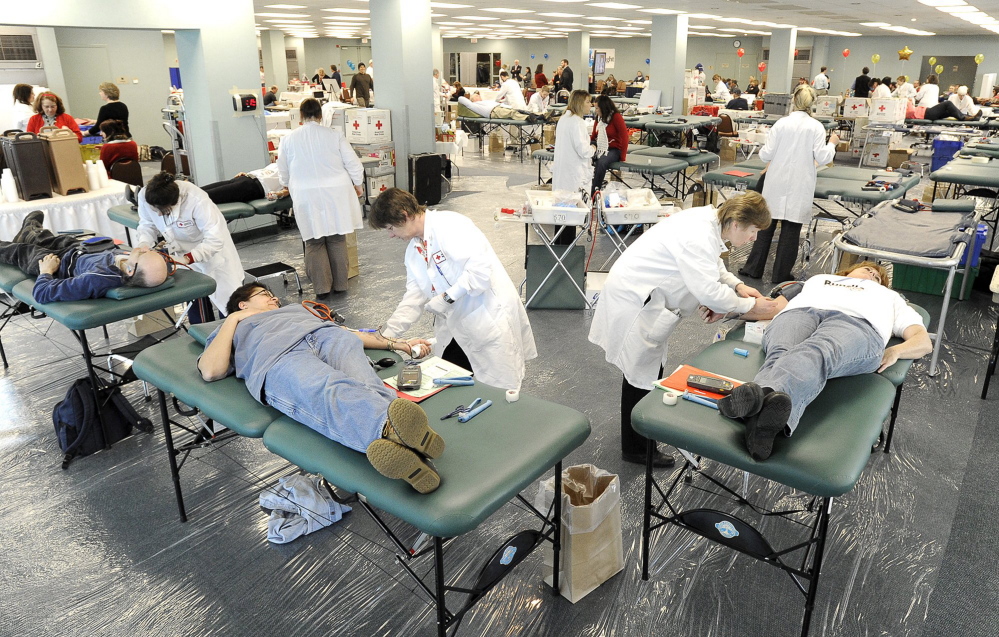If you’re a man and you have had sexual contact with another man, even just once and as far back as 1977, you are banned for life from giving blood.
But go to bed with an HIV-positive woman, and you have to wait only 12 months before donating at your local Red Cross.
That’s because, according to federal policy, it is more risky to take blood from a gay man with a safe sexual history than from a straight person engaged in inherently risky sexual behavior.
Modern blood testing, however, has all but eliminated the risk that led to the blanket ban on blood donations from gay men, to the point that it is at least as safe as that of other donors. The Food and Drug Administration should loosen the ban to match that reality.
ANOTHER ERA
The ban dates back to the early 1980s, at the outbreak of the AIDS epidemic. It was imposed after recipients of blood donations, many of them hemophiliacs who received frequent transfusions, began contracting the disease.
Blood testing, when it became available in 1985, was not very advanced.
Initially, the most doctors could do was test for antibodies that are indicative of HIV.
Those antibodies do not start appearing until around 45 days from the time of infection, leaving a long “window period” during which the disease could not be detected.
That changed in 1999, with the advent of nucleic acid amplification testing. NAT, as it is known, detects the virus itself, and detects it within seven to 10 days of infection. The chance of the test getting it wrong after that “window period” is around 1 in 2 million.
That’s enough for the American Red Cross, the American Association of Blood Banks and America’s Blood Centers – representing all of the blood taken for donation in the United States. The organizations since 2006 have been calling for a change in the lifetime ban, which they call “scientifically unwarranted.”
They argue instead for a 12-month deferral period for blood donations, mirroring the ones in place for people engaging in other “high-risk sexual behaviors.”
FDA HAS NOT BUDGED
Others agree. Both the United Kingdom, which now has a one-year deferral, and Canada, which uses a five-year deferral, have recently abolished lifetime bans.
A group called the National Gay Blood Drive also is seeking a change in the ban. Last week, the group held events in more than 60 U.S. cities, including Portland.
The FDA, which reviewed the ban in 2010 and again in 2012, has not budged. HIV infection rates in men who have sex with other men have risen lately, the agency argues, and the danger to the blood supply remains too high to allow for a change in policy.
The agency’s stance is not about discrimination; it is about risk. The agency can’t be faulted for wanting to get the chance of disease transmission as close to zero as possible, but with advanced testing, the lifetime ban no longer makes sense.
The FDA trusts the science in most cases, and it should trust the science in this one as well.
Send questions/comments to the editors.



Success. Please wait for the page to reload. If the page does not reload within 5 seconds, please refresh the page.
Enter your email and password to access comments.
Hi, to comment on stories you must . This profile is in addition to your subscription and website login.
Already have a commenting profile? .
Invalid username/password.
Please check your email to confirm and complete your registration.
Only subscribers are eligible to post comments. Please subscribe or login first for digital access. Here’s why.
Use the form below to reset your password. When you've submitted your account email, we will send an email with a reset code.